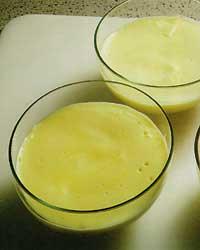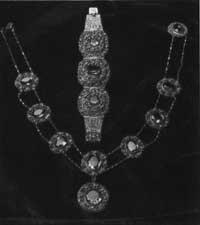Underwater wealth
2000/02/13 Kortabarria Olabarria, Beñardo - Elhuyar Zientzia
Salt is mineral, but in the sea there are many more minerals. All these minerals have their origin in the path of water. The rain moistens the terrestrial surface. Before reaching the sea, part of this water filters to the ground, collecting on this route many substances that will then lead to the sea. In the end, few substances are dissolved and there are substances that are more difficult to dissolve. In addition, due to its greater specific weight than that of water, many substances move to the bottom of the sea.
The seas are billions of years old and, however, in them you can find a lot of dissolved materials: 3.25% of the seas are solid dissolved materials, and it is estimated that their weight will be 1.5 trillion tons. If all the solid material present in marine water were separated, 50,000 tons of materials would be obtained, of which approximately 37,000 would be salt and other minerals.

But what are those minerals. One of them is magnesium, and according to experts it is estimated that there is a total of 1,900 billion tons. With this treasure it would hardly be exhausted in a few years and in addition part of what would be removed and used would return to the sea. But it is not so simple, since you can not catch the sea water and filter the necessary magnesium. In fact, magnesium is not non-stop in the water, that is, in a certain area it would be possible to find a huge bag of magnesium, but there is none around. Therefore, to obtain an acceptable amount of magnesium, you should filter the pile of sea water. For example, to obtain a kilo of magnesium it would be necessary to filter 950 liters. This is not an obstacle, however, because currently there are techniques that have made this process profitable.
Another of the most frequent minerals in marine waters is bromine, familiar with chlorine. It is estimated that in the sea there can be 100 billion tons. Compared to the amount of magnesium, this figure would not reach 20%. This means that to obtain a kilo of bromine, the amount of water to be filtered should be 20 times higher than in the case of magnesium. Therefore, to obtain a kilo of bromine it would be necessary to filter 19,000 liters of water. The number seems impressive and so, but the existing technologies allow the process to be profitable. And it's not a mere theory, since the sea is one of the biggest suppliers of all the joke that is achieved on the planet.
Like magnesium and bromine, in marine waters, iodine is also found. That is, much less than the bromine, thousands of times less: a total of 86,000 million tons. This means a kilo of iodine of 20 million liters. Evidently, taking into account these proportions, the process of extraction of the mineral could not be profitable at all. Therefore, the technology invented by man could not deal with this objection. Fortunately, nature has its own technology. In this case the algae have this function. The algae spontaneously absorb the iodine present in the water, which can be collected, burned and extracted from the ashes that occur after burning.
Finally, one of the most appreciated minerals is gold. It is estimated that there are 12 million tons in the sea. Knowing this, there may already be someone who wants to start renting the barquillo with the sieve on the arm. Stop! Do not miss anything!. To remove a kilo of gold, it would have to filter 270,000 million liters. The same operation would be much more expensive than a kilo of gold, and of course, much more boring, more laborious, etc. Therefore, it is deposited in the sea where there is gold.
To fill the pocket will not give it, but aside from the usual ones, other fruits also leave the sea. One of them is that of healing, since some of the minerals dissolved in the sea are very beneficial. An example of this Dead Sea, whose characteristics are well known:
- Sulfur: It is used as an antibiotic, mainly to reduce the action of dead skin cells.
- Magnesium: anti-allergic, reduces surface itching.
- Iodine: antiseptic, helps in body metabolism.
- Lithium-Strontium: favors the intracellular biological process.
- Selenium: antioxidant, prolongs life.
- Zinc : Facilitates the absorption of vitamin A.
- Bromine: reduces pain.
- Calcium: strengthens the bones.
- Potassium and sodium: help absorb other minerals.
- Hydrogen: reduce the influence of dead skin cells.
- Copper: helps keep bones and tendons in good condition.
- Iron: contains oxygen in hemoglobin and myoglobin.
Published in 7

Gai honi buruzko eduki gehiago
Elhuyarrek garatutako teknologia






